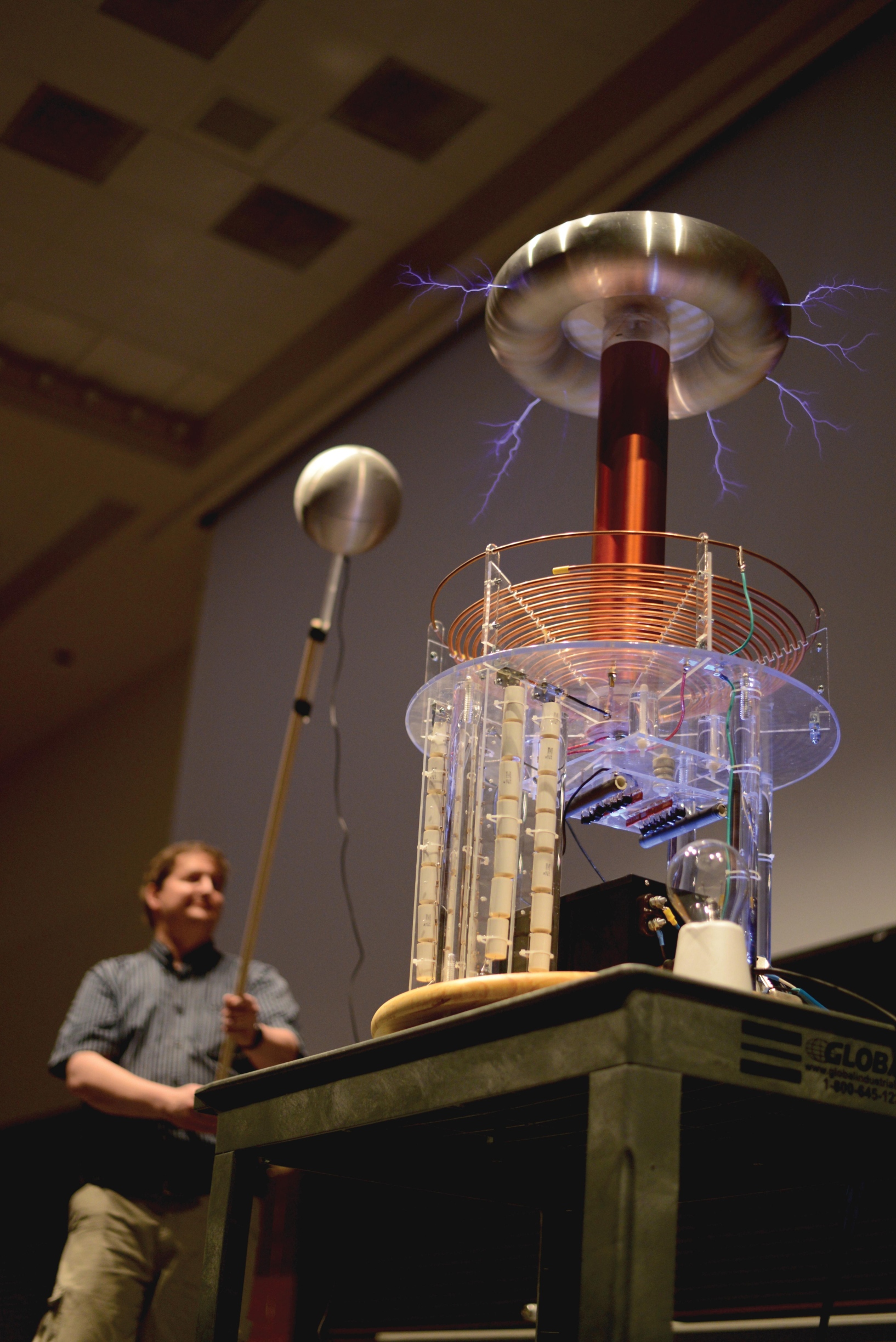Science Week moves forward with a bang
Rocks floated, eggs showed their super strength, balloons exploded and electricity flew at the “What’s Cool About Physics?” demo show during Common Hour on Wednesday in the TSC Ballroom as part of Science Week.
Physics department lab supervisor James Coburn entertained and educated students with a variety of tricks common to demonstrations he does in valley elementaries.
“The fire marshall allowed me to do things in this room that you’re not normally allowed to do in this room,” he said to the audience.
He later exploded a hydrogen-filled balloon by holding a torch to it, to the screams and cheers of audience members.
Coburn started the show off by demonstrating water density. He asked the audience if wood floats, then ducks – or at least a rubber duck. Both bobbed at the top of the glass tank.
“And sure enough, you can make rocks float,” he said as he placed a chunk of pumice in the water.
Audience members gasped as he placed a 10-pound bowling ball in the water. The ball hovered just above the tank’s bottom. Coburn explained a 10-pound, but not 12-pound bowling ball can float because it is just barely less dense than water.
Kellie Erickson, a senator for the College of Science, said this was her first time watching one of Coburn’s demos. Her favorite part was the Tesla coil, Coburn’s finale.
“This one over here is the one you’ve been waiting for,” he said, gesturing to the large device at the end of the stage. “This is a Tesla coil.”
The crowd “Ooh’d.”
Tesla coils, named after Serbian-American inventor Nikola Tesla, are a special circuit invented by Tesla in 1891. They are often used in educational demonstrations to show how electricity transmits wirelessly.
The coil is always a hit at demonstrations, said Jacob Dansie, a member of the Society of Physics Students. Dansie and the club assists with the valley demonstrations and helped build the coil used by Coburn.
“Tesla’s pretty much the father of modern society as we know it, at least modern industry,” Dansie said. “He did three-phase induction, built brushless motors, which you find in everything.
“Mostly, Tesla just took everything that was existing, like with motors and induction and current, and he improved it vastly.”
Dansie built the big vortex cannon used at Wednesday’s show. A vortex cannon shoots air rings similar to smoke rings, only visible. At the show, however, they actually did shoot smoke rings by focusing a fog machine inside for a few seconds and then setting it off.
“Whenever anything explodes, people love that,” Dansie said. “Like, boom.”
Coburn’s showing skills are well-known, Dansie said.
“This is what he does. He’s the physics showman of the university,” Dansie said. “He’s in charge of a lot more than that, but that’s what he’s famous for.”
Science Week continues today with drop in resume editing and taking professional pictures from 9-11 a.m. at USU Career Services in the basement of the University Inn, Erickson said. That evening, the Science Council will honor students in their college at an invitation-only dinner.
On Friday, students can come writ
e thank you notes to science professors from 8 a.m. to noon in buildings with science classrooms across campus, she said. That night, elemental bingo, based on the periodic table of elements, will be held from 7:30-8:30 p.m. in the Engineering building, room 103.
The week will end with a dance in the Health, Physical Education and Recreation building gymnasium from 8-11 p.m. Students are free with their USU ID card, and the first 150 attendees receive free sunglasses.

